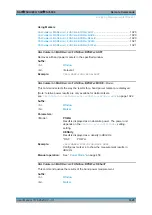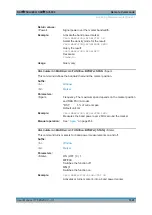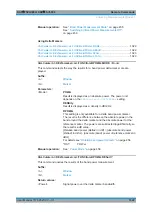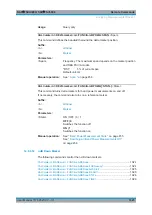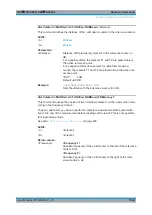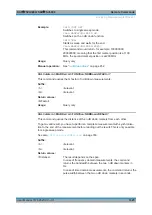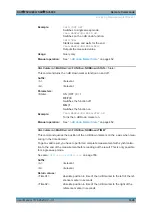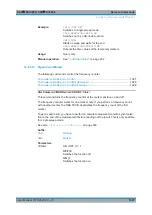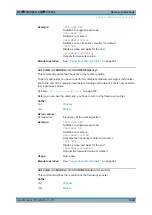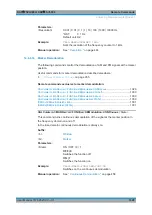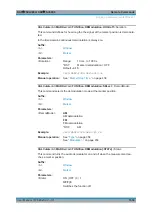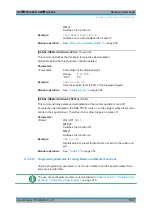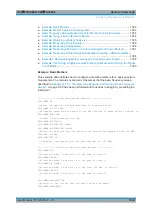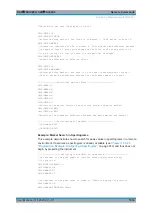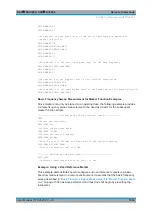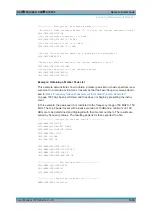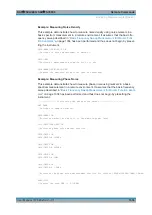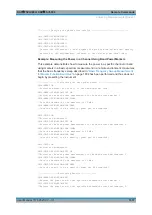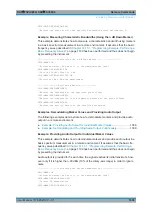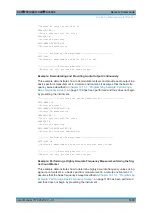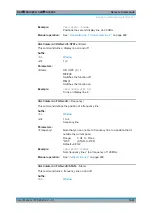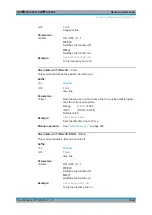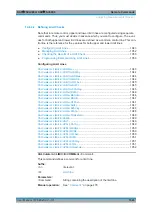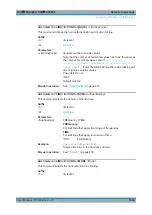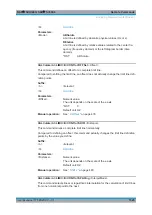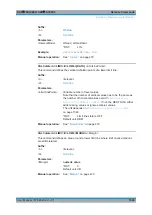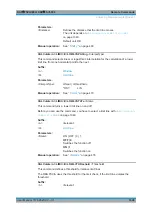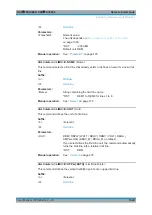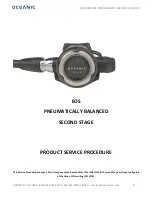
Remote Commands
R&S
®
FSVA3000/ R&S
®
FSV3000
1034
User Manual 1178.8520.02 ─ 01
CALC2:MARK2:X?
CALC2:MARK2:Y?
//Set marker3 on peak power level in the entire spectrogram in memory and
//query its position
CALC2:MARK3 ON
CALC2:MARK:SPEC:SAR MEM
CALC2:MARK3:SPEC:XY:MAX
CALC2:MARK3:X?
CALC2:MARK3:Y?
//Move marker 3 to the next lower peak level for the same frequency
CALC2:MARK3:SPEC:Y:MAX:NEXT
CALC2:MARK3:X?
CALC2:MARK3:Y?
//Set marker 4 to the highest level in the (visible) spectrogram.
CALC2:MARK:SPEC:SAR VIS
CALC2:MARK4:SPEC:XY:MAX
//Move marker 4 to the next higher level in the frames above its current position.
CALC2:MARK4:SPEC:Y:MAX:ABOV
Basic Frequency Sweep Measurement for Marker Function Examples
Since markers can only be placed on an existing trace, the following example provides
a simple frequency sweep measurement to be used as a basis for the subsequent
marker function scripts.
//-------------- Configuring the basic frequency sweep -------------
*RST
//Resets the instrument
INIT:CONT OFF
//Selects single sweep mode.
FREQ:CENT 100MHz
//Defines the center frequency
FREQ:SPAN 200MHz
//Sets the span to 100 MHz on either side of the center frequency.
DISP:TRAC1:Y:RLEV 0dBm
//Sets the reference level to 0 dBm.
//------- Performing the measurement -------------------------
INIT;*WAI
//Performs a measurement and waits for it to end
Example: Using a Fixed Reference Marker
This example demonstrates how to configure and use reference markers in a basic
spectrum measurement in a remote environment. It assumes that the basic frequency
sweep described in
"Basic Frequency Sweep Measurement for Marker Function Exam-
on page 1034 has been performed and thus does not begin by presetting the
instrument.
Analyzing Measurements (Basics)

